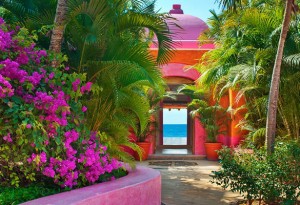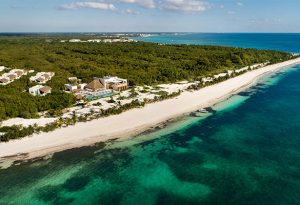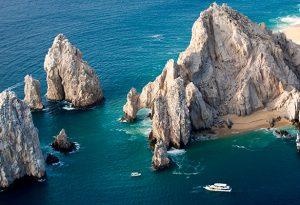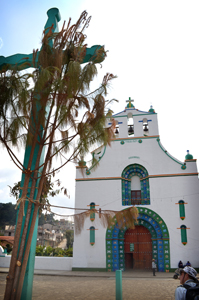
Green Cross Outside the Church of Chamula
One of the most interesting stops on a recent trip through Chiapas was in a small town just outside San Cristobal de las Casas called San Juan Chamula. Our excellent guide Roberto had informed us on the way to the town that its people were some of the last Mayans to succumb to the Spanish and that their rebellious spirit has lived on since as the town currently holds a special autonomous status within Mexico. No outside police forces are permitted in the town. In terms of religion, the church of San Juan Chamula has gained legendary status due to its complex mixture of Christian and Pagan beliefs.
On the outside, the church of San Juan Chamula looks like most any Christian church of its time period yet when our guide asked us why we though the giant cross outside the church was painted green, we quickly realized that the Chamula church was anything but typical (Mayans paint the crosses green in homage to Mother Earth and The Sacred Tree of the Maya). Upon entering the church, we immediately noticed more green as there were no pews in the church and the floor was covered in fresh pine needles (also in tribute to Mother Earth).
Seated on the pine needles were several groups of people, each with their own family shaman who were there to heal the sick. The people of Chamula ran their priest out of town some years ago; however, they do allow the priest to return on certain occasions to baptize the children, but he is forced to leave again immediately after the ceremony. In the priest’s absence, the people of Chamula line the church floor with rows of candles and burn incense to achieve the proper mood for healing and prayer. Needless to say, the priest strongly disagrees with these practices and even more with the alcohol that is consumed in the church.
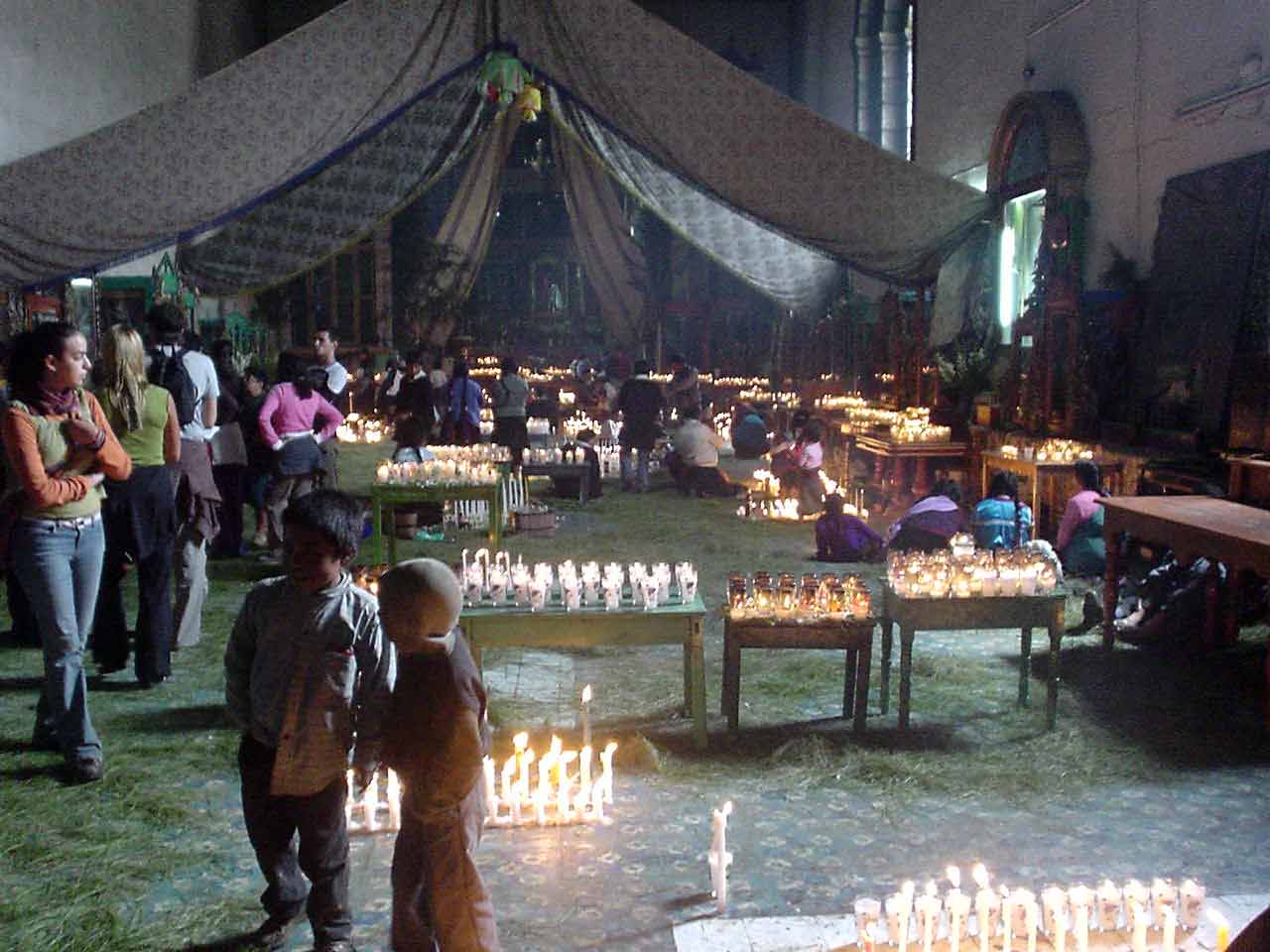
Photos are forbidden inside the church, but a few have found their way to the internet
Pox (pronounced “posh”) is an alcohol brewed of sugar cane and pineapple, which the shaman drink during their rituals of healing. They also pour the drink out on the floor for the saints as the saints are more likely to grant favors when they’ve had a bit to drink. In between drinks, the shaman chant the names of the saints of whom they are asking for help in repetition, creating a constant buzz in the air.
During the chants, many of the shaman were rubbing the bodies of their patients with eggs, which Roberto told us is a common practice used to heal. In more serious cases, a live chicken was rubbed on the individual before having its neck snapped by the shaman. This, Roberto explained, was because the people of Chamula believe that when someone gets really sick, it is because evil spirits have taken a piece or pieces of the person’s soul. To retrieve the missing soul, the shaman offer the life of the chicken in exchange for the stolen pieces. During the forty or so minutes we were in the church, I believe I saw at least three chickens killed in offering.
Surrounding the groups of shaman and patients are the statues of the saints to whom the people of Chamula pray. It was the presence of these status, undeniably catholic figures, that really intrigued and confused me. If the people of Chamula have already thrown out the priest, why keep all the Catholic/Christian relics? Long story short, Roberto explained that way back when the Spanish were establishing control, the Mayans had to accept a certain degree of Christianity to keep from being persecuted. On the flip side, the Spanish Catholics found it easier to establish control if they allowed the natives to weave their beliefs into the Catholic traditions. The result was a sort of mash up of the two religions, which, over time, became the norm.
Normal to us, however, it was not. I was fascinated by the range of reactions to the church from our group (which consisted of 13 travel experts from around the world). One thing I think we all agree upon was that visiting the church of San Juan Chamula is a true and unique travel experience not to be passed up. Watch the video below for the reactions of a few of our group members. If you’re interested in learning more about the church at San Juan Chamula, there are two great articles at forteantimes.com and www.philipcoppens.com.


